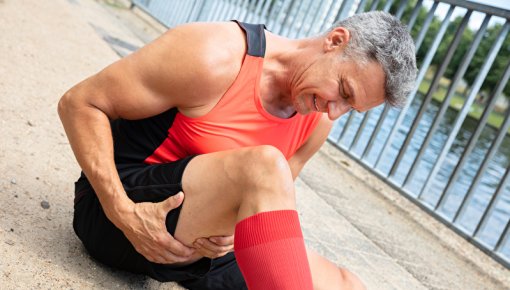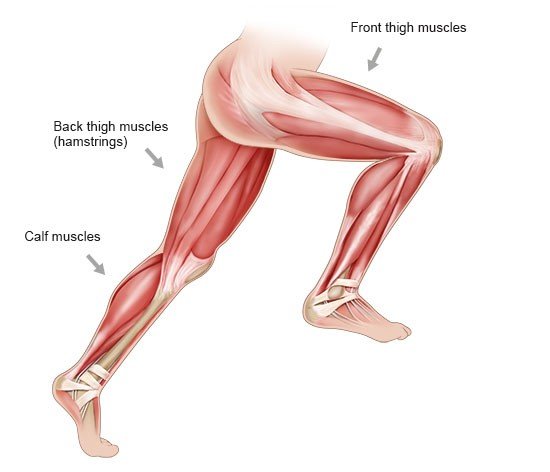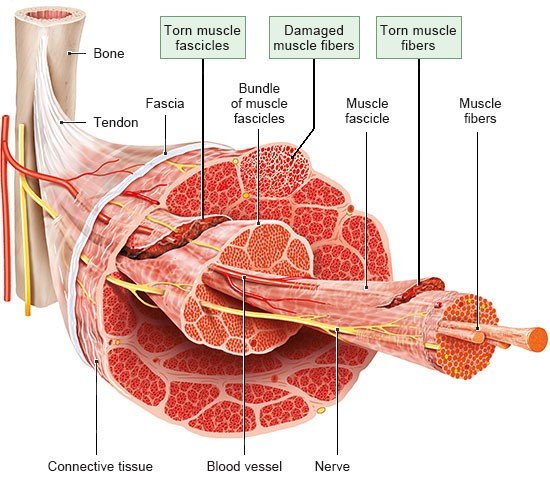Crossley KM, Patterson BE, Culvenor AG et al. Making football safer for women: a systematic review and meta-analysis of injury prevention programmes in 11 773 female football (soccer) players. Br J Sports Med 2020; 54(18): 1089-1098.
Freckleton G, Pizzari T. Risk factors for hamstring muscle strain injury in sport: a systematic review and meta-analysis. Br J Sports Med 2013; 47(6): 351-358.
Graf C. Lehrbuch Sportmedizin: Basiswissen, präventive, therapeutische und besondere Aspekte. Cologne: Deutscher Ärzteverlag; 2011.
Grassi A, Napoli F, Romandini I et al. Is Platelet-Rich Plasma (PRP) Effective in the Treatment of Acute Muscle Injuries? A Systematic Review and Meta-Analysis. Sports Med 2018; 48(4): 971-989.
Green B, Bourne MN, van Dyk N et al. Recalibrating the risk of hamstring strain injury (HSI): A 2020 systematic review and meta-analysis of risk factors for index and recurrent hamstring strain injury in sport. Br J Sports Med 2020; 54(18): 1081-1088.
Hotfiel T, Seil R, Bily W et al. Nonoperative treatment of muscle injuries - recommendations from the GOTS expert meeting. J Exp Orthop 2018; 5(1): 24.
Kieb M, Lorbach O, Engelhardt M. Muskelverletzungen: Diagnostik und Behandlungen. Orthopade 2010; 39: 1098-1107.
Klein C. Orthopädie für Patienten. Remagen: Michels-Klein; 2014.
Lemes IR, Pinto RZ, Lage VN et al. Do exercise-based prevention programmes reduce non-contact musculoskeletal injuries in football (soccer)? A systematic review and meta-analysis with 13 355 athletes and more than 1 million exposure hours. Br J Sports Med 2021; 55(20): 1170-1178.
Müller-Wohlfahrt HW, Ueblacker P, Hänsel L. Muskelverletzungen im Sport. Stuttgart: Thieme; 2018.
Niethard FU, Pfeil J, Biberthaler P. Duale Reihe Orthopädie und Unfallchirurgie. Stuttgart: Thieme; 2017.
Poudel B., Pandey S. Hamstring Injury. Treasure Island (FL): StatPearls Publishing; 2022.
Riepenhof H, McAleer S, Delvescovo R et al. Sportverletzungen - Möglichkeiten und Grenzen der konservativen Therapie. Trauma und Berufskrankheit 2018; 20: 265-271.
Rodgers CD, Raja A. Anatomy, Bony Pelvis and Lower Limb, Hamstring Muscle. Treasure Island (FL): StatPearls Publishing; 2022.
Rudisill SS, Varady NH, Kucharik MP et al. Evidence-Based Hamstring Injury Prevention and Risk Factor Management: A Systematic Review and Meta-analysis of Randomized Controlled Trials. Am J Sports Med 2022 [Epub ahead of print].
Sheth U, Dwyer T, Smith I et al. Does Platelet-Rich Plasma Lead to Earlier Return to Sport When Compared With Conservative Treatment in Acute Muscle Injuries? A Systematic Review and Meta-analysis. Arthroscopy 2018; 34(1): 281-288.
Van der Horst N, van de Hoef S, Reurink G et al. Return to Play After Hamstring Injuries: A Qualitative Systematic Review of Definitions and Criteria. Sports Med 2016; 46(6): 899-912.
Van Dyk N, Behan FP, Whiteley R. Including the Nordic hamstring exercise in injury prevention programmes halves the rate of hamstring injuries: a systematic review and meta-analysis of 8459 athletes. Br J Sports Med 2019; 53(21): 1362-1370.
Vatovec R, Kozinc Z, Šarabon N. Exercise interventions to prevent hamstring injuries in athletes: A systematic review and meta-analysis. Eur J Sport Sci 2020; 20(7): 992-1004.
IQWiG health information is written with the aim of helping people understand the advantages and disadvantages of the main treatment options and health care services.
Because IQWiG is a German institute, some of the information provided here is specific to the German health care system. The suitability of any of the described options in an individual case can be determined by talking to a doctor. informedhealth.org can provide support for talks with doctors and other medical professionals, but cannot replace them. We do not offer individual consultations.
Our information is based on the results of good-quality studies. It is written by a team of health care professionals, scientists and editors, and reviewed by external experts. You can find a detailed description of how our health information is produced and updated in our methods.



